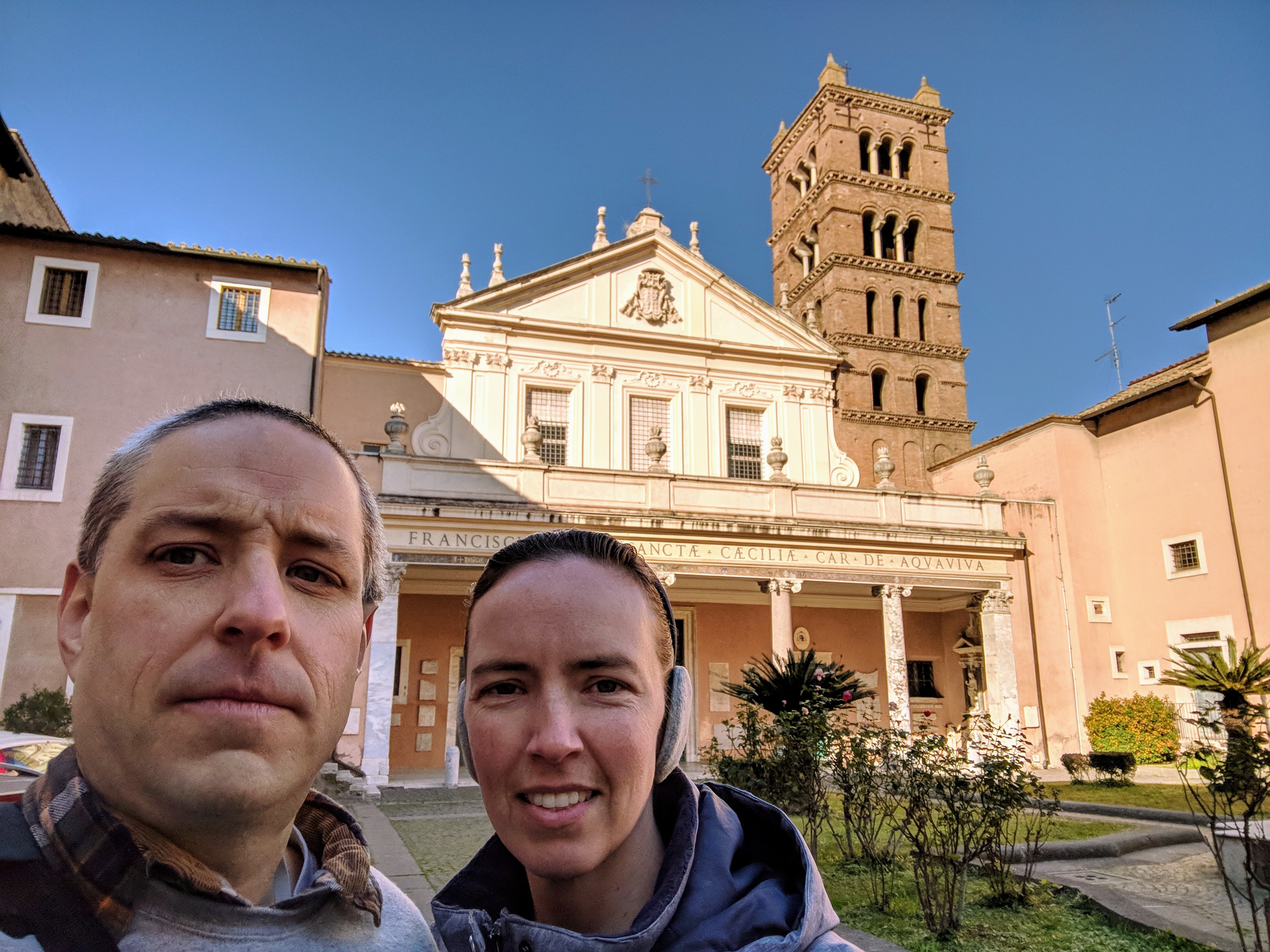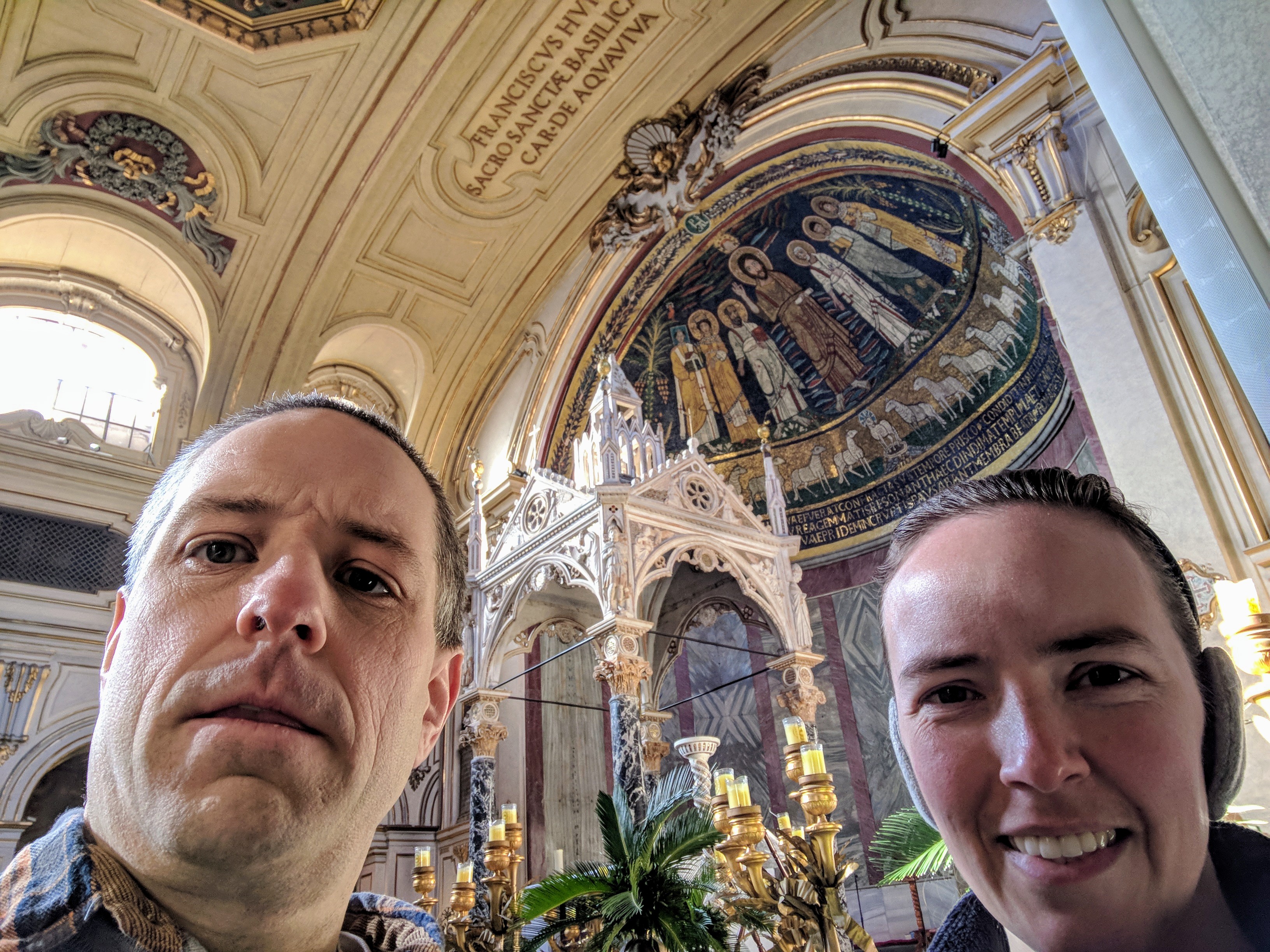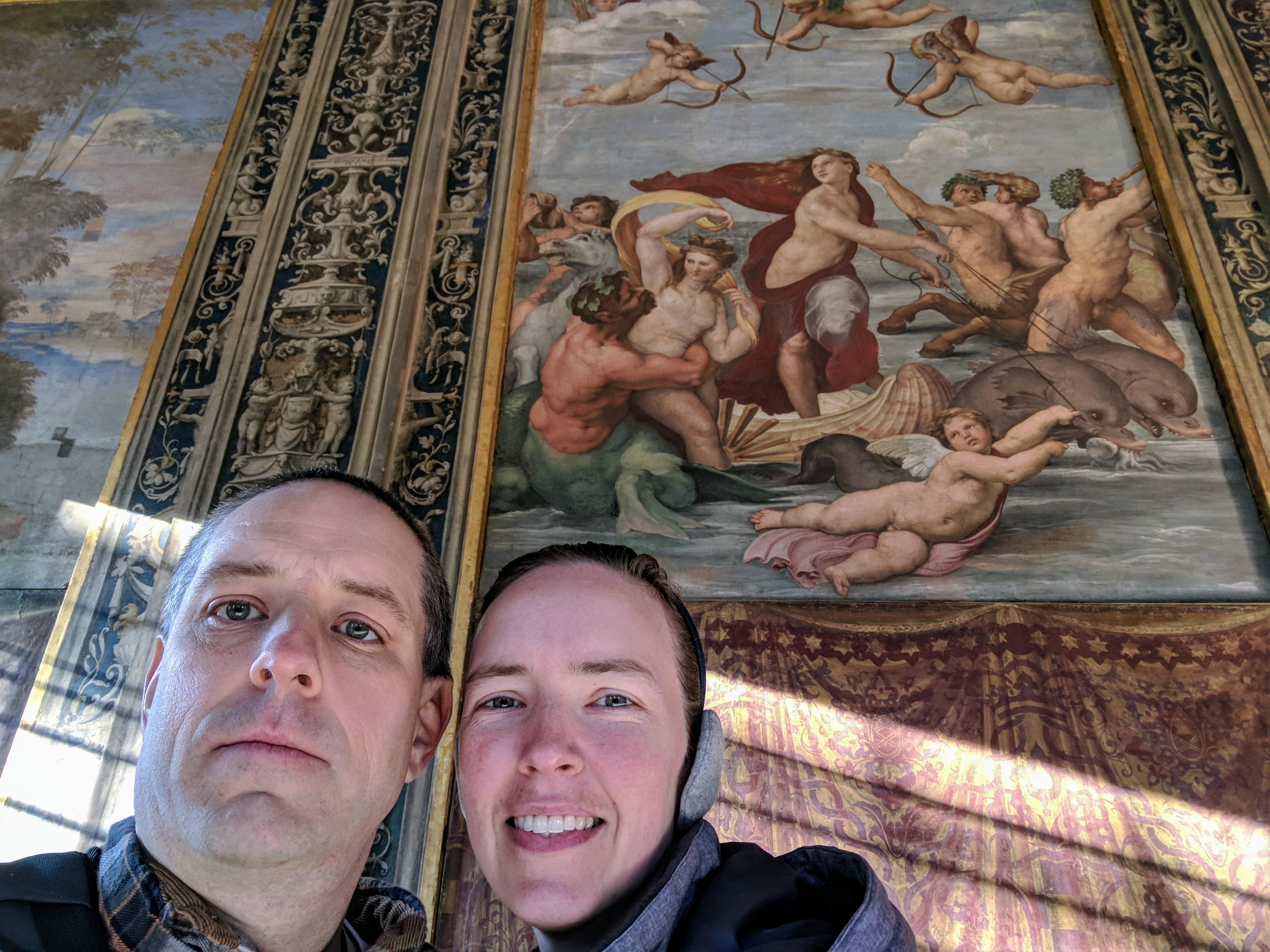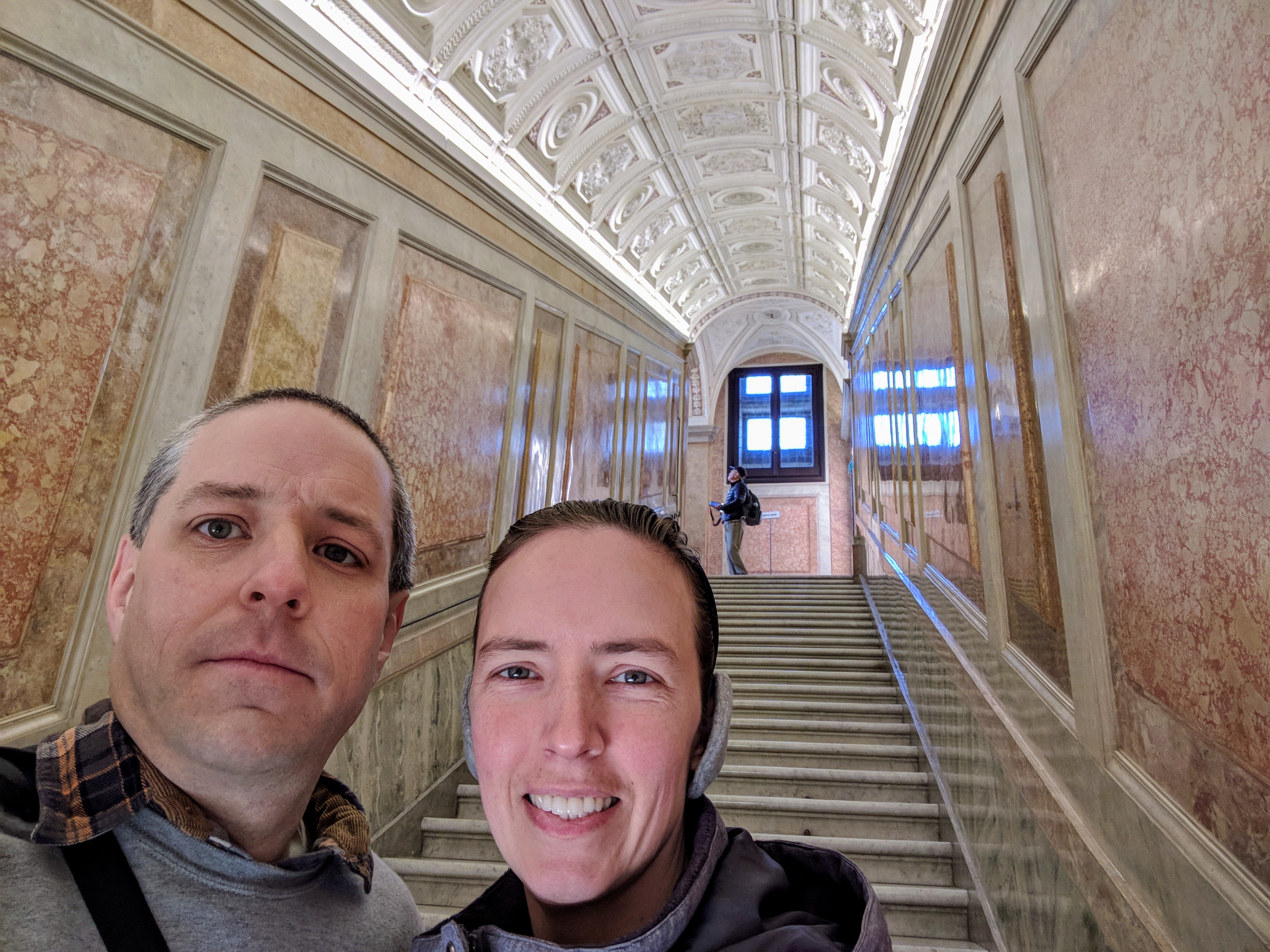Santa Cecilia and Villa Farnesina
Mon Dec 04, 2017 8:43 amAfter stopping at a Cafe for Breakfast, we filled up on more art, history, and culture at Basilica Santa Cecilia and Villa Farnesina.
Basilica Santa Cecilia in Trastevere was built in the 5th Century and rebuilt in 822.
The location is where early Christians met in the home of Saint Cecilia, who was martyred, in the era before Christianity was recognized in the Roman Empire per Emperor Constantine. This resonates with those who are raised to believe that the paradigm outlined in Matthew 18:20 is more Biblically correct than are any Religious Organizations.

The Ionic and Corinthian columns are salvaged from pagan temples. The Facade and Bell Tower Facade were both built in 18th Century, but I think they look Early Baroque.


In general this is a Medieval Church that was restored in the 18th Century. However the Altar Canopy is Gothic, with spires and pointed arches.
The 9th Century mosaic has figures representing Paul, Cecilia, Paschal I, Peter, Valerian, and Agatha with Christ in the Center.


Villa Farnesina was the personal pleasure-palace of the richest man in Europe, Sienese Banker Agostino Chigi. He may have been descended from Tuscan Nobility of Lombard extraction.
In this fresco by Raphael, the Olympian Gods meet to decided how to test Psyche to find out if she is worthy of Cupid. Along with Michelangelo and Leonardo da Vinci, Raphael was one of the three masters of the High Renaissance, a movement which rediscovered the artistic skill, perspective, proportionality, depth, and anatomical-correctness of ancient Rome and Greece, which had been absent from Western Europe during the intervening Millennium.
He is perhaps most famous for painting frescos in the Raphael Rooms in Vatican Palace, especially School of Athens. His paintings are known for their symmetry.

Raphael’s fresco Galatea draws your attention to the figure in the center.
I think it is interesting to contrast Raphael vs Michelangelo and da Vinci in terms of their representation of women. For instance Night by Michelangelo looks like a man with breasts. Or consider Mona Lisa’s smile which intrigues us with its mysteriousness until we discover that perhaps da Vinci simply was incapable of representing any other kind of facial expression on a woman?

The staircase at Villa Farnese remind one of Leo Kotke’s The Banks of Marble.